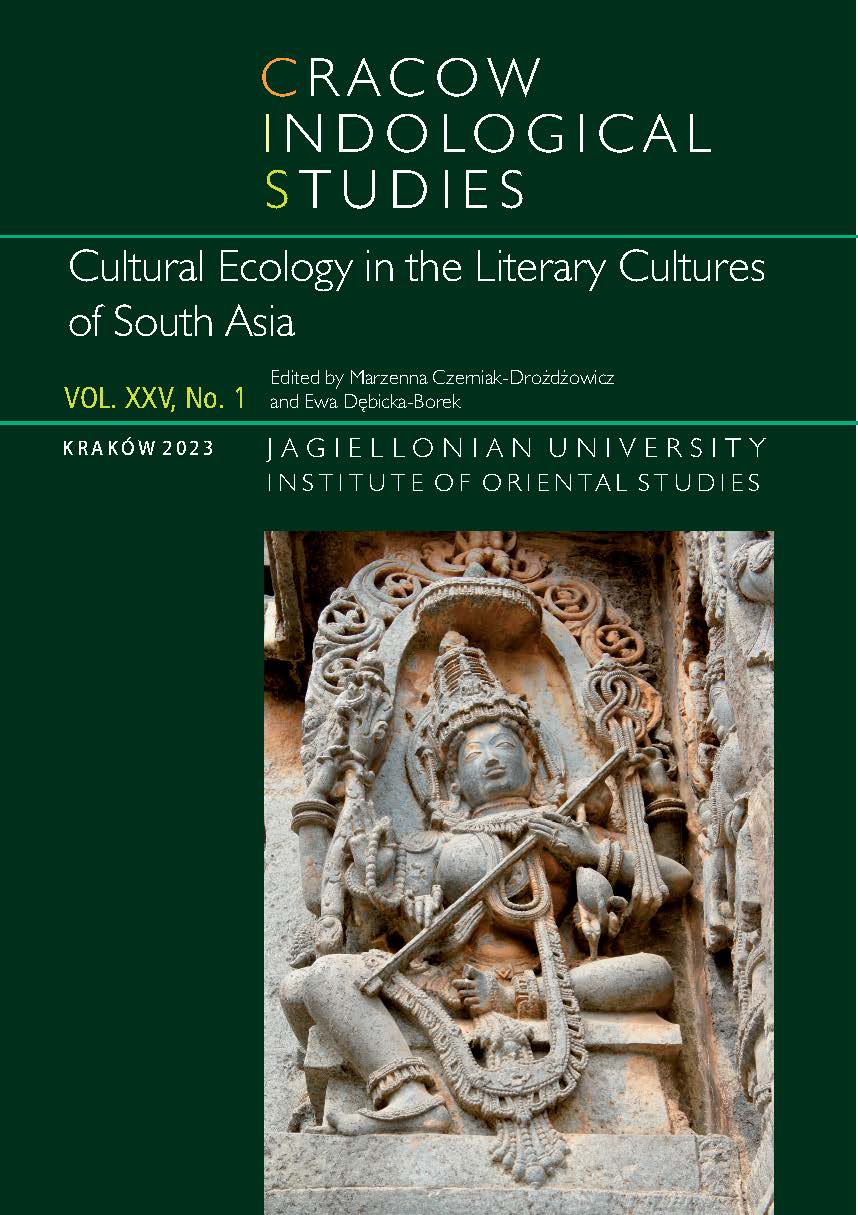Sacred Groves, the Brahmanical Hermit, and Some Remarks on ahiṃsā and Vegetarianism
Sacred Groves, the Brahmanical Hermit, and Some Remarks on ahiṃsā and Vegetarianism
Author(s): Cinzia PierucciniSubject(s): Cultural Anthropology / Ethnology, Health and medicine and law, Sociology of Culture, Social Norms / Social Control
Published by: KSIĘGARNIA AKADEMICKA Sp. z o.o.
Keywords: sacred groves; forest; Ilā; Urvaśī and Purūravas; hermit; Dharmasūtras; Mānavadharmaśāstra; ahiṃsā; vegetarianism;
Summary/Abstract: The term ̳sacred grove‘ is used to denote an area of vegeta- tion that is afforded special protection on religious grounds. In India, where sacred groves are known by a wide repertoire of local names, such places may be found right from the Himalayas up to the far South. Sacred groves host veneration of natural phenomena or elements of landscape, but also ancestral, local, folk or tribal gods and Sanskritised deities; the use of their resources is strictly regulated. Research studies on sacred groves in India often consider them to be a legacy of archaic economic forms, possibly harking back to the stage of hunters-gatherers, and an expression of a re- ligiosity dating back to a remote, non-Aryan, pre-Vedic antiquity. However, main sources for our knowledge of Indian antiquity, namely the literary sources, provide no direct record of voices of such archaic societies. None- theless, the same sources allow us to highlight some important aspects of the sacredness anciently ascribed to vegetation, forest, and specific places therein. The present paper proposes to focus on the Brahmanical hermit‘s distinct relationship with the forest and examine some aspects related to food.
Journal: Cracow Indological Studies
- Issue Year: 25/2023
- Issue No: 1
- Page Range: 237-257
- Page Count: 21
- Language: English

